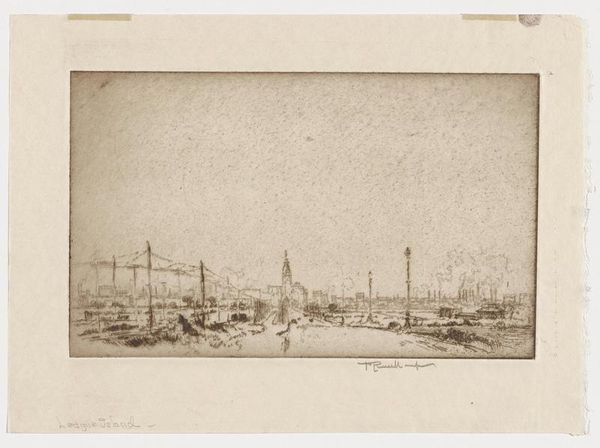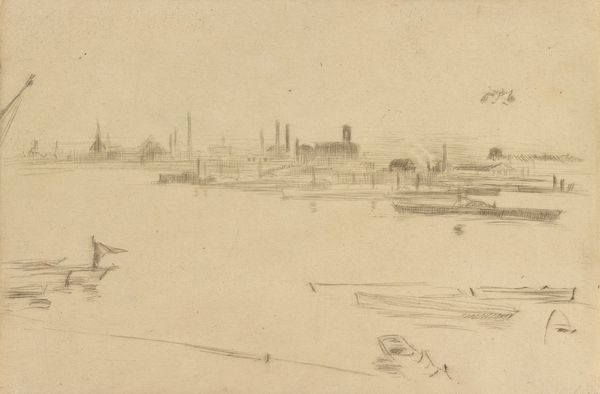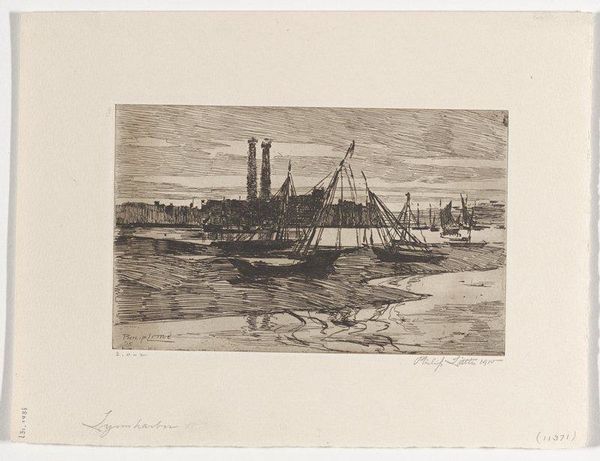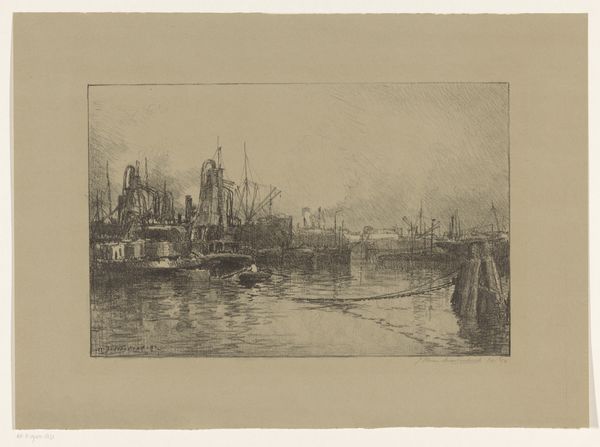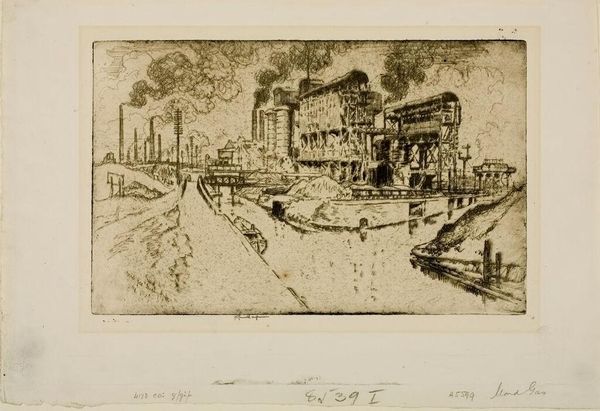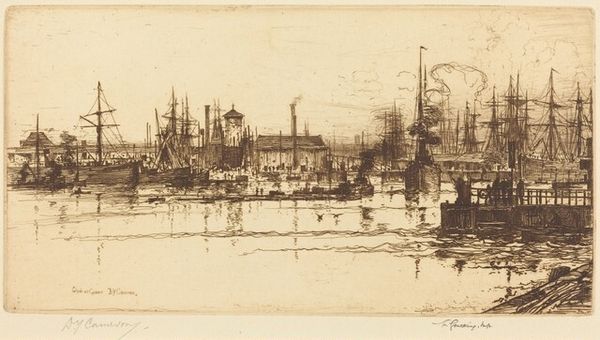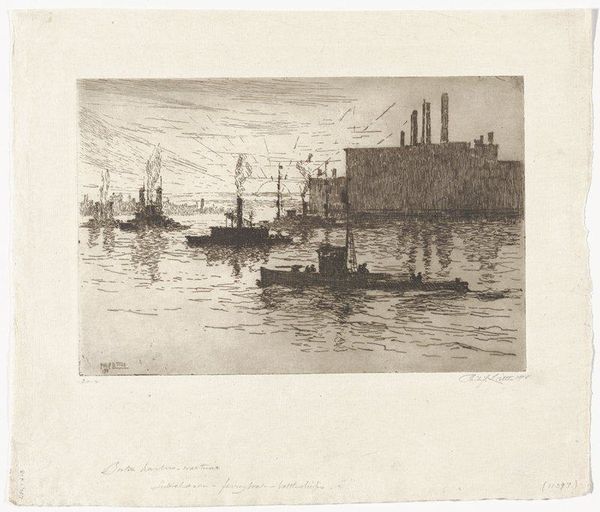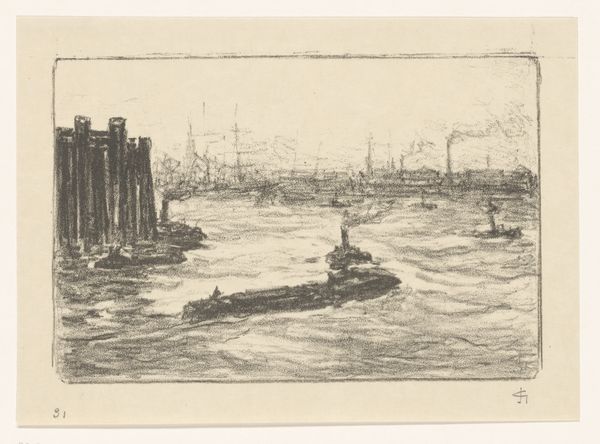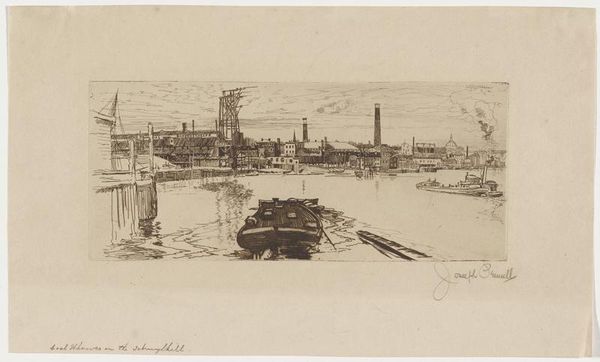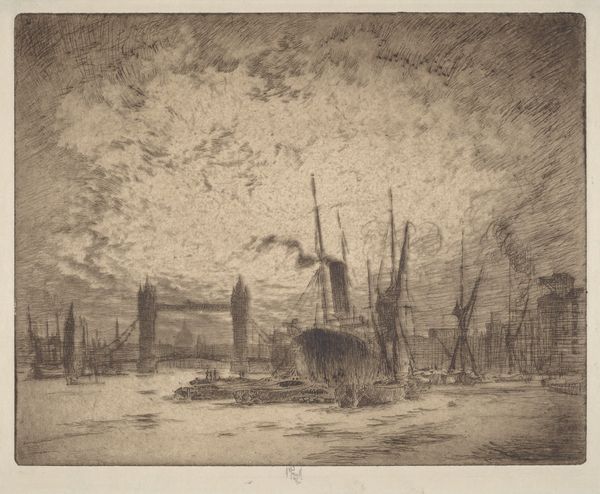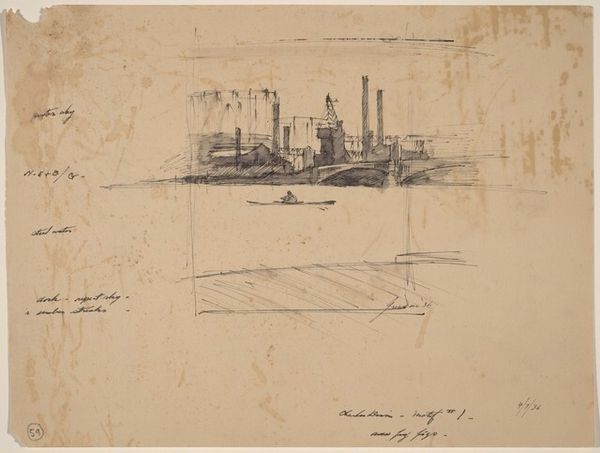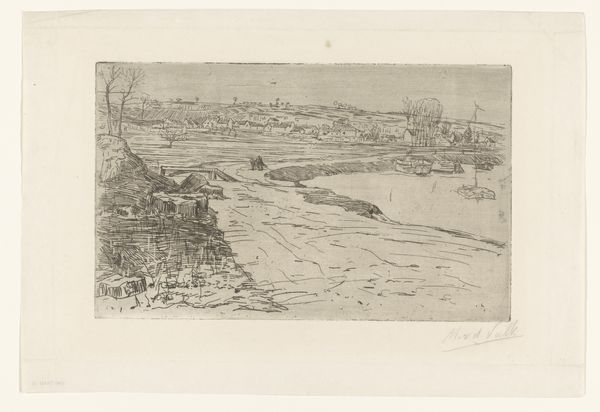
Dimensions: 4 15/16 x 11 7/8 in. (12.54 x 30.16 cm) (plate)10 1/4 x 16 3/16 in. (26.04 x 41.12 cm) (sheet)
Copyright: No Copyright - United States
Curator: Looking at "Brick Country," an etching from 1909 by Joseph Pennell currently residing here at the Minneapolis Institute of Art, my first feeling is bleak. Just a wash of gray and a sense of decay settling over everything. Editor: Decay is an interesting choice of word. Pennell, an American expatriate, made this etching during a period when industry was rapidly transforming landscapes. It's easy to romanticize "nature," but he confronted viewers with the reality of industrial production. Curator: Oh, absolutely, the visual noise translates into a feeling of a deep industrial ache. I sense Pennell is not making any moral argument for or against the change, but I wonder how he *felt* in that landscape, faced with those changes. Is that smoke from the chimneys a melancholic exhale of our future being shaped? Editor: Pennell definitely saw himself as a modern artist. Prints like this helped make art more democratic, accessible. He was trying to capture something essential about the American landscape altered by industry, not just its physical appearance but also its socio-economic implications. These views gave form to ideas about how progress was achieved, who paid the price. Curator: But who chooses which progress we commemorate and preserve? Why this view and not one bursting with bucolic glee? Perhaps Pennell captured some gritty truth other landscape painters were side-stepping, and he turned that truth into something akin to beauty, by force of artistic vision. The chimneys become almost like strange trees. Editor: That "gritty truth" resonated with the Social Realists and regionalist painters who emerged in the 1930s, artists interested in portraying everyday life, including its less appealing aspects. It asks a question still debated: whose story gets told, and how? The starkness allows one to read in multiple registers from despair and desolation to human labor and community. Curator: Ultimately, gazing upon "Brick Country" reveals its poignant reminder that beauty and brutality, creation and destruction, can coexist and converge within a single frame. Editor: It prompts a larger conversation about the shifting definition of landscape and America’s understanding of itself in the 20th century and perhaps even more powerfully, our continued moment of unprecedented industrial transformation.
Comments
No comments
Be the first to comment and join the conversation on the ultimate creative platform.
